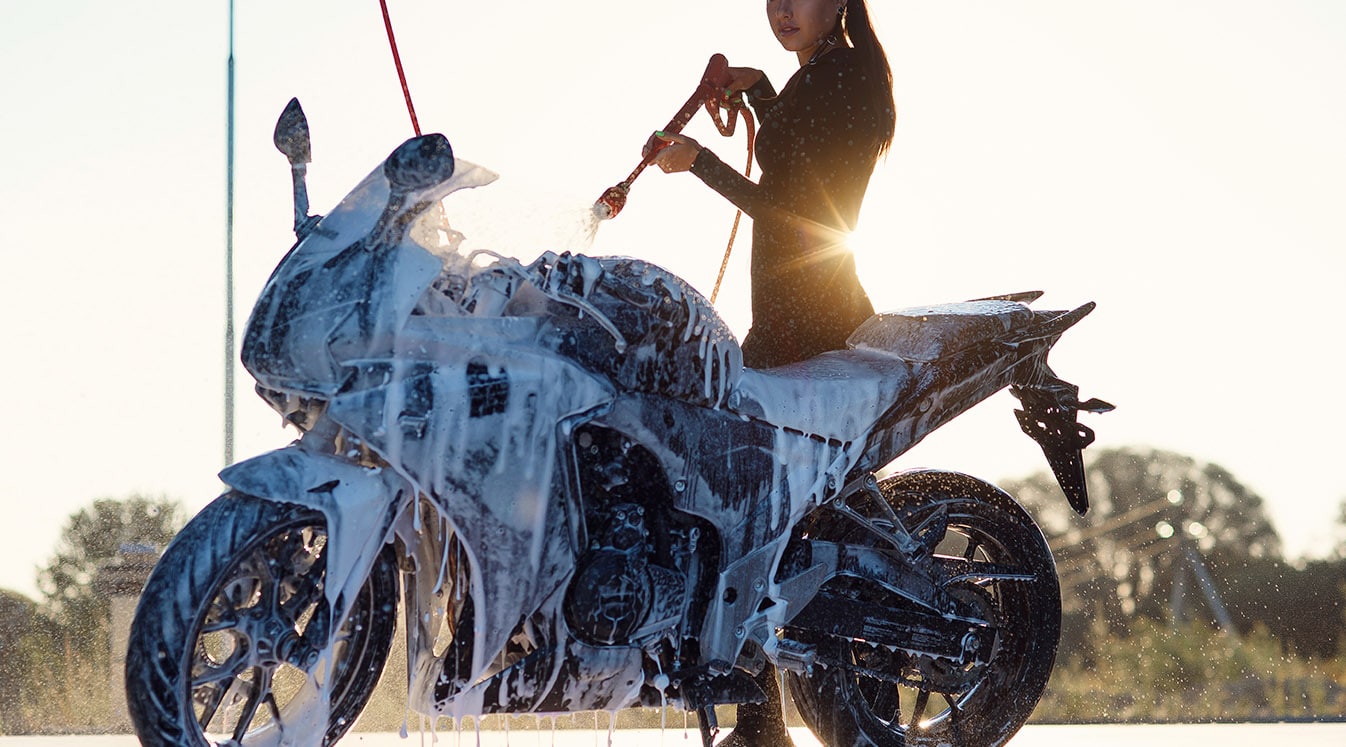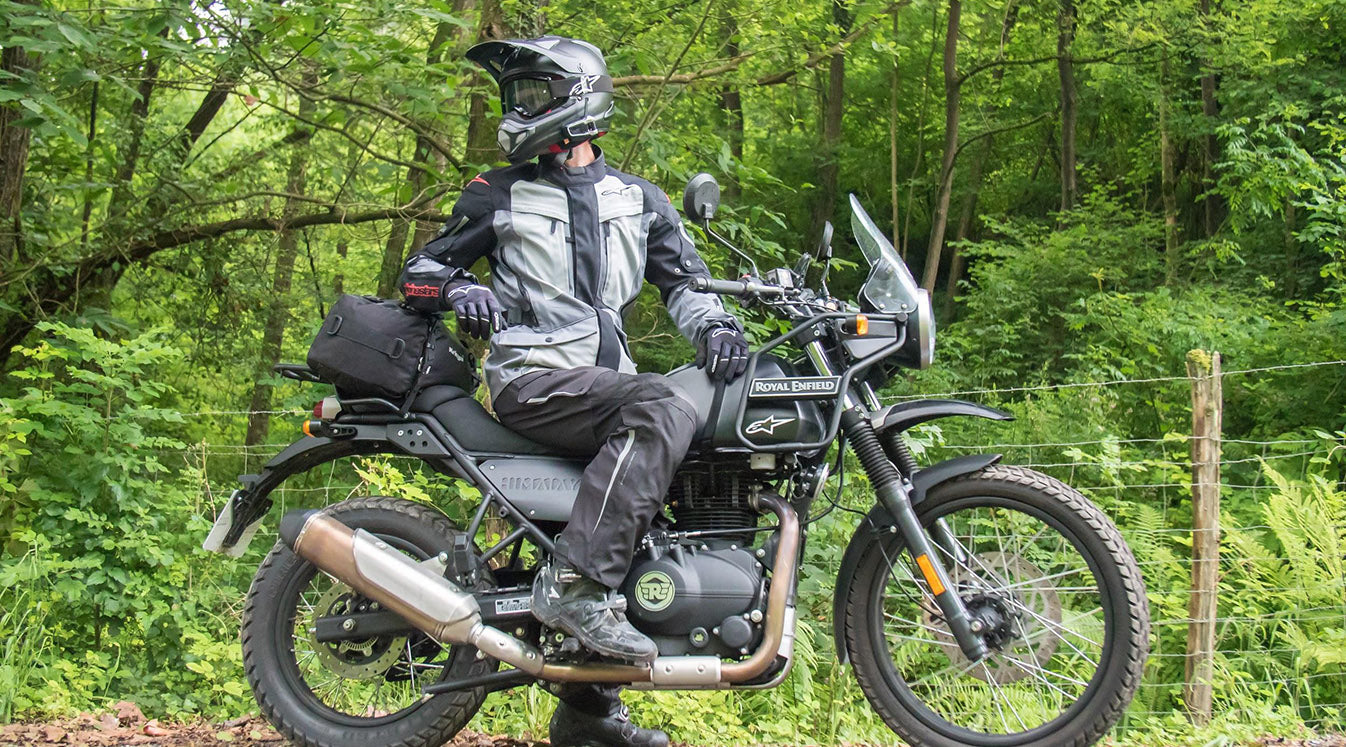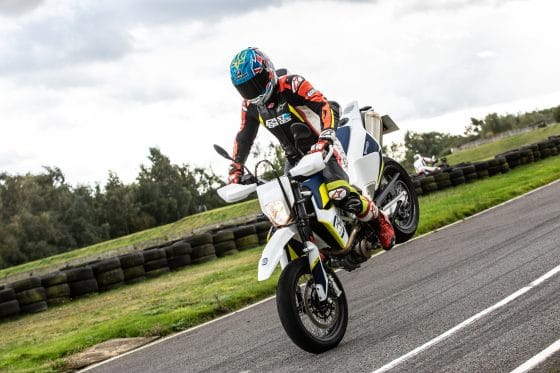“Ugh!” Your buddies hear that expression of disgust in their Bluetooth motorcycle helmet speakers, and they probably know what happened. Your precious bike has been slimed—with mud, bugs, water or who knows what else that’s been lying in wait for you on the road.
The dirty truth is that your bike will spend hours getting spattered with all kinds of gross stuff, so it’s important to know how to give it a good cleaning. Washing your bike doesn’t have to be difficult, but you need to know how to do it the right way. Here’s a simple, idiot-proof guide to washing your motorcycle without hurting your two-wheeled baby.
Supplies for Washing Your Motorcycle
First, you’ll need to get these supplies together:
- Soap: Choose a motorcycle-specific cleaning formula rather than a cleaner designed for passenger vehicles.
- Sponges: Grab a few soft all-purpose sponges.
- Paintbrushes: A couple of small paintbrushes, one soft and one stiff, will help you get the tough-to-reach spots.
- Chamois or Microfiber Cloths: These cleaning cloths are good for drying and polishing your motorcycle.
- Bucket: Any standard bucket will do, so long as it’s clean.
- Hose: Make sure your hose has an adjustable nozzle that lets you change the pressure.
Where to Wash Your Motorcycle
If only motorcycles were like dogs and you could just wash them in the bathtub. Alas, there are a multitude of reasons why that isn’t a good idea, so you’ll need a good place to wash your bike.
You want two main things in choosing a workspace for washing your motorcycle: somewhere you can make a mess and somewhere that’s out of direct sunlight. While you might enjoy some sun on you while you clean the bike, it will make the soap dry more quickly, which can lead to stains and streaks if you can’t wipe it off in time.
A carport is an ideal place to wash a motorcycle, but a garage will do as well. Just wheel your bike to the threshold of the garage so you don’t get water everywhere. If you have to wash your bike in an exposed area like a driveway, try to do it on an overcast day.
1. Get your motorcycle ready to be washed.
First, a little prep work will make for an easier and safer wash:
- Use a rag to plug your exhaust and prevent water from entering the pipes.
- Remove accessories like bags and locks.
- Check electrical connections like spark plugs to ensure they aren’t loose.
Finally, remember that your engine should be completely cool before washing the motorcycle.
2. Give the motorcycle a quick rinse.
Start loosening up the gunk with a short rinse from your hose. You should use the lowest pressure setting for the body of the bike, but it’s OK to crank it up a little when you get to the wheels and fenders.
3. Lather your bike up with soap.
Read the directions on your soap and learn how it’s supposed to be applied. Some cleaners can be sprayed on, left to sit and then rinsed off. Others have to be applied and removed by hand—in which case, you should follow these tips:
- Wash easily-scratched painted areas like the gas tank and fenders first.
- Go slowly with your sponge, and make sure to wash it off immediately if it picks up any dirt.
- Use your paintbrushes to get into those difficult nooks and crannies, using the soft brush for engine components and the stiff brush for wheels and tires.
4. Rinse the bike again.
Now it’s time to wash off the soap you just applied. Take your hose again and give the bike a good washdown, starting from the top and remembering to use low-pressure settings for the more delicate areas. Do this as soon as you can after applying the soap so that it doesn’t dry on your motorcycle.
5. Dry the motorcycle.
Take the chamois or microfiber cloth and gently dry your bike. Just like with rinsing, start with sensitive painted surfaces first before doing the engine, wheels, tires and exhaust. Use multiple cloths so that you don’t spread dirt from one part of the bike to others.
6. Apply lube to your motorcycle’s chain.
You’re almost done, but there’s one more thing to do. Your wash probably removed most of the grease from your motorcycle’s chain, so now you’re going to put it back on. Wait until your motorcycle is dry and then grab a can of motorcycle chain lubricant and apply it to the entire chain.
7. Take a ride.
It’s a good idea to take a short ride on your bike after washing it. Put on your helmet and motorcycle communication system and hit the road. This will help you remove water from the bike’s components, particularly the brakes. Speaking of your brakes, they may not provide the response you’re used to while wet, so be careful and avoid highway speeds until your bike is a bit more dried out.





